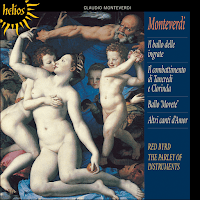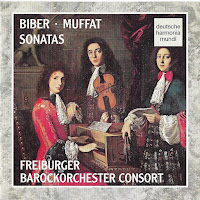
Claudio Monteverdi (1567-1643)
Altri canti d'Amor SV146[8'20]
Combattimento di Tancredi e Clorinda SV153[19'21]
Volgendo il ciel – Movete al mio bel suon SV154[9'18]
Il ballo delle ingrate[32'05]
Red Byrd (John Potter tenor - Richard Weistreich bass)
The Parley of Instruments
Peter Holman
Produced by Martin Compton
Engineered by Tony Faulkner
Recording January 1991
All Hallows, Gospel Oak, London, United Kingdom
Duration: 69 minutes 4 seconds
Hyperion Helios 2004
flac, cue, logs, digital booklet and cover
GRAMOPHONE CRITICS' CHOICE
Reviews
‘At the pinnacle of current Monteverdi singing on records’ (Fanfare, USA)
‘One of the most perfect CDs ever made. Unsurpassable: glorious music, superb performances and hair-raising sound. The performers, engineers, and Hyperion Records deserve the highest praise’ (Classical Express)








 r
r









































